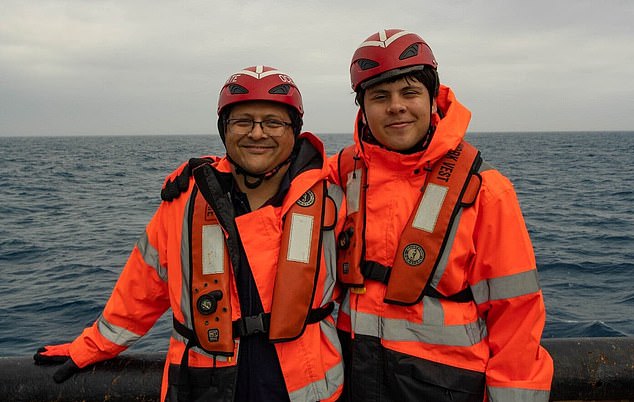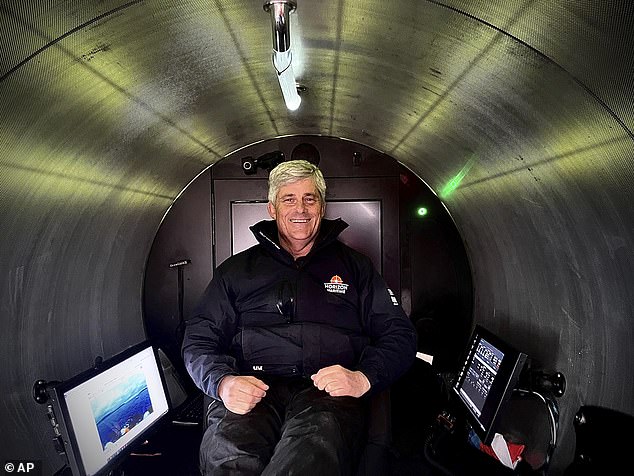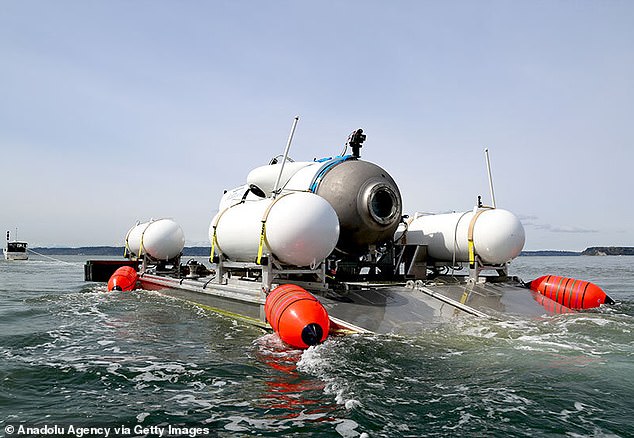
Sick gamblers made thousands of dollars betting on whether the doomed Titan submarine would ever be found and whether those on board would survive, it has emerged.
Punters wagered over $300,000 on whether the then missing submersible would be found by June 23 when the oxygen was supposed to have run out on board, with many betting that it wouldn’t be.
And on June 23, those sick gamblers were proven correct after rescuers discovered debris from the Titan which had suffered a ‘catastrophic implosion’ 1,600ft from the bow of the Titanic, killing all five onboard.
As a result, the gamblers made thousands of dollars though the cryptocurrency platform Polymarket by betting that the submersible would never be found and those on board – including British-Pakistani billionaire and his 19-year-old son – would be killed, reports Mother Jones.
On the Polymarket page where gamblers were betting whether those on board would live or die, it stated: ‘For the purposes of this market, the vessel need not have been rescued or physically recovered to be considered “found”.
‘If pieces are located, but not the cabin which contains the vessel’s passengers, that will not suffice for this market to resolve to “Yes”.
Shahzada Dawood, 48, and his son Suleman, 19, are seen just before they boarded the Titan submersible on June 18 ¿ hours later the trip would end in tragedy






Stockton Rush, the 61-year-old chief executive of OceanGate, was at the controls












French Navy veteran Paul Henry Nargeolet (left) was in the sub along with British billionaire and explorer Hamish Harding
One gambler, named only as Brian, told the news outlet he made $8,000 by betting that all on board – including British billionaire Hamish Harding and French explorer Paul-Henri Nargeolet – would perish on the submersible.
Another gambler, Rich, said he made $3,250 and defended profiting and betting from whether those on board would die.
‘The markets are fundamentally immoral. There’s no ethical consumption under capitalism,’ Rich said before admitting that he had been given ‘grief’ from his partner for his decision to bet on the fate of the submersible and those on board.
The move has prompted backlash online, with some Twitter users condemning the gamblers on profiting from a tragedy.
‘What stage of capitalism is investing in someone’s death,’ one Twitter user wrote.
Another replied: ‘Actually insane. Imagine making money off if someone is gonna die or not.’
‘Humanity is ending day by day. Imagine betting real money on people’s lives,’ another wrote.
But Rich argued that unlike markets that the public view as immoral – like buying defense or oil stocks – betting that the submersible would not be found had no impact on the outcome.
At the time, before the submersible was found, Polymarket said in a statement: ‘If the families were privy to Polymarket, they could use the market as a way to obtain real-time, unbiased probability of the submarine being recovered.
‘That is a far more valuable service to them than sensationalist media coverage: with our markets at least they understand the true probabilities.’
It later emerged that the submersible had suffered a ‘catastrophic implosion’ that will have killed all those onboard instantly.
Earlier this week, it emerged that the five onboard – including OceanGate CEO Stockton Rush – had spent their final moments before the Titan imploded listening to their favorite music in total darkness to conserve power while watching bioluminescent creatures in the deep.
Experts had warned Rush for years that his self-designed submersible was not fit for diving to the depths seen at the Titanic’s grave due to its carbon fibre hull.
The material is very stiff, has a high chemical resistance, a high-temperature tolerance and low thermal expansion, however it is also prone to delamination, which is the process whereby a material fractures into layers while put under pressure.






The Titan submersible is seen being towed out to sea on board its raft before it descended and imploded, killing all five on board
And it has since emerged that Rush had used college-aged interns from Washington State University to design the electrical system used in the doomed Titan submarine.
Deep sea exploration specialist Rob McCallum said Rush ignored a series of safety warnings they had flagged after he saw that the interns would ‘drink Kool-Aid’ and boast how a PlayStation remote was used to run the Titan.
Rush had said the system inside the Titan submersible ran on Bluetooth, but McCallum explained that this was a real safety issue. ‘Every sub in the world has hardwired controls for a reason – that if the signal drops out, you’re not f*****,’ he said.
Other experts who worked at OceanGate, including the chief pilot David Lochridge who later left the company over safety concerns, had described the Titan as a ‘mutt’ and a ‘lemon’ that was ‘not safe to drive’.
Source: | This article originally belongs to Dailymail.co.uk